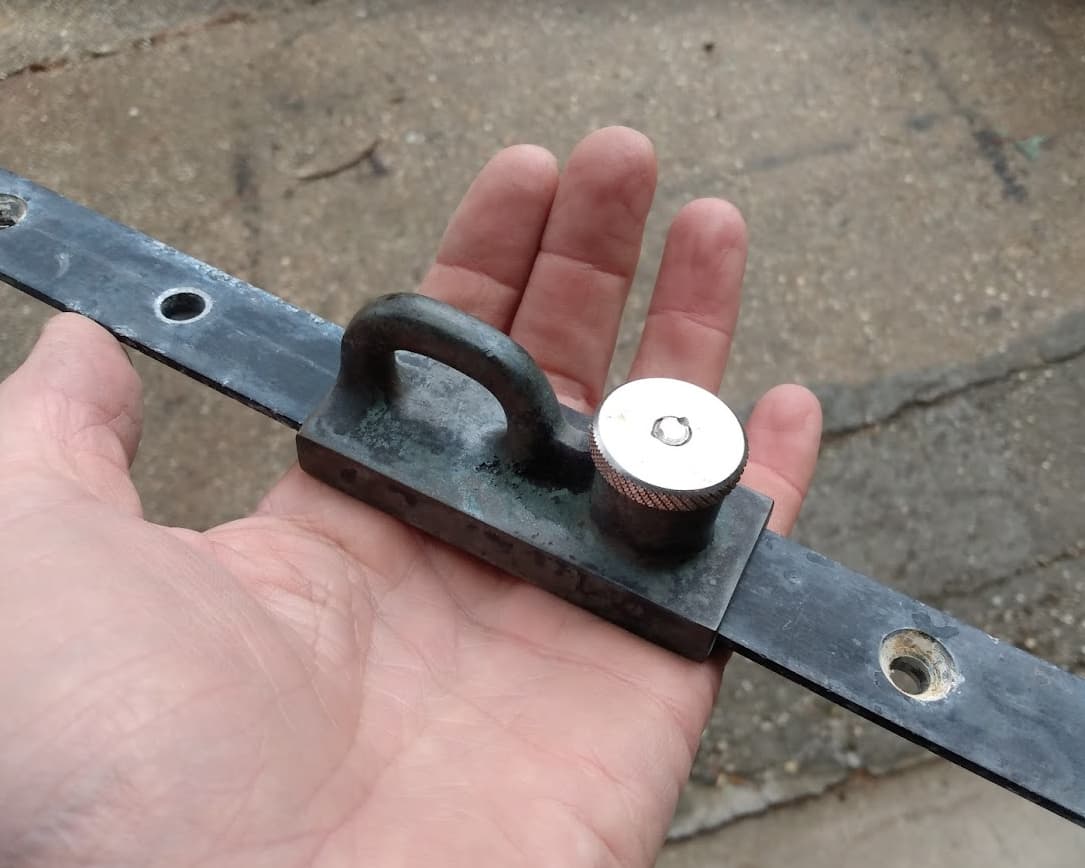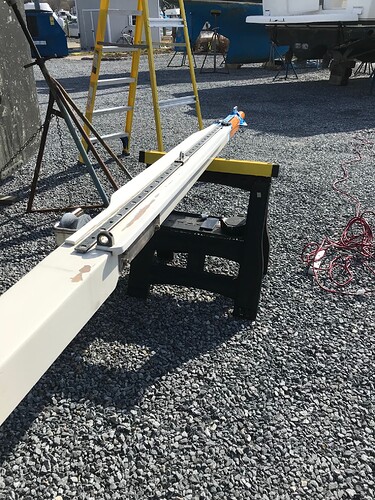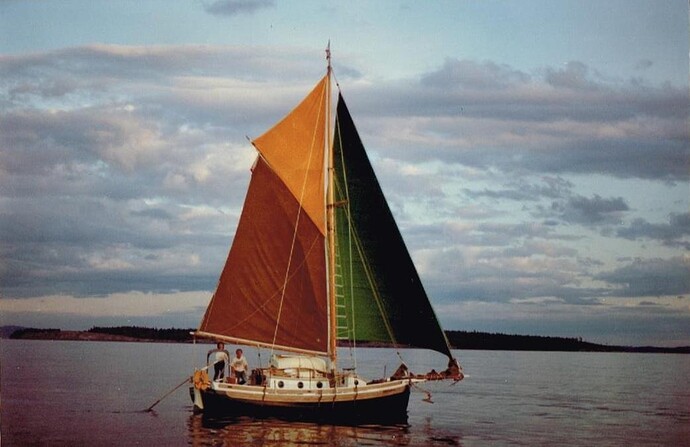Does anyone have any extra/surplus 1" bronze tee track? I’d like to replace the corroded aluminum staysail fairlead tracks on Calypso with bronze. Looking for 2x 18-20" sections
Hi Jeremy, What brand of fairlead cars do you have? I did the same with some 3/4" Schaefer cars where I wanted to use some 3/4" Merriman bronze t-tracks. Yes the widths were the same but the Schaefers wanted a thin sail track. Had to machine the bronze and it was really tricky.
I’ve had good luck finding old bronze t tracks at Longship’s in Puget Sound. They say they will not ship but if you call them they will. They are really nice to work with and the prices are very reasonable. Here is a link to some track that may do - https://www.longshipmarine.com/store/product/USED%20Sailing%20Hardware/16T04K
Their website has a nice search function
I’m not sure who made the cars. There are no markings. I purchased them in the early 90s. They fit the conventional 1" aluminum track well enough.
Thanks for the heads up on Long Marine. Pretty amazing looking store. This piece here looks like what I would need - but more of it.
Aluminum would be easy, bronze parts seem to be getting more rare. I’ll check around here. If there is anyone in the Seattle area, they have an excellent Flea Market once a year. https://www.fisheriessupply.com/swap-meet
Should be quite the event, they have cancelled it the last two years so there should be a massive pent up demand.
Speaking of T-track- Anyone have any ideas on why you would put it on the top of the bowsprit? It’s been there since we got the boat, but I can’t figure out what you’d want to use it for. The jib is on a furler (and based on the age of the furler, it has been for quite a few years) so it’s not for a downhaul. I first thought maybe something with a spinnaker, but obviously you’d need that to be forward of the headstay.
Cheers,
Mike
Hummm - I’ve not seen this on any other BCC. Does your boat have a wire luff drifter? Is the track screwed or through bolted to a backing plate on the underside?
Called a “bowsprit traveller” used before the advent of roller furling. Saves you from having to go out on the “widow maker” to set the tack. Traditionally a stout leathered ring with a hook that goes around the sprit. You set the tack of your flying jib to it and run it half way-out, raise the sail and then run the tack out the rest of the way and because of the geometry, really tightens up the luff without using a winch.
Jeremy-I’m not sure if there was a drifter with a wire luff, but none came with the boat. I’m inclined to believe if previous owners had one then we would have gotten it with the boat (some of the sails are clearly original). The track is partially through bolted (towards the bow where the bowsprit is a bit thinner). No backing plate, just large washers.
Vixen-I’ve thought of the bowsprit traveler set up, which is always possible, although it’s clear the roller furling gear has been on the boat for a very long time (on the list for future replacement).
I’m wondering if there’s any reason to keep it, or if I should (at some point) just get rid of it and fill the holes.
I’m a big believer in eliminating fastener holes if you don’t need them. Fewer leaks and moisture damage down the road. ![]()
The only advantage to keeping it would be you could have your working jib on the furler and deploy your light air jib or spinnaker off the traveller. Otherwise, I’m with Jeremy and the fewer holes the better in spars.
Vixen- I thought about that, but wouldn’t the spinnaker tack need to be forward of the jib furler?
Cheers,
Mike
Hi Mike,
Yes, you are right, on modern rigs the tack of the asymmetrical spinnaker is outside of jib forestay. The sheets are run around the outside too.
I’m sort of coming from a different place, so take this with a grain of salt. I’ve never warmed up to roller furling, I do understand them but … I used to sail on SF Bay. We cringe every time we see someone sailing on a half furled jib. The high winds teach you to shape sails for control.
A bowsprit traveller is a specialized tool used before the advent of roller furling. They work hand in hand with a “flying” jib, a jib that isn’t hanked on the forestay. Traditionally a light air system and because it is set flying, doesn’t have a tight luff, tricky to use upwind.
I know a little about how it is used. Traditional boats use a ring around the bowsprit that can be hauled out. The idea is you set the tack of the jib you want to fly and haul it out on this ring to the stay, easy … well there are some tricks. If you raise the sail first, then haul it out, the luff tightens as you haul because of mechanical advantage. The ring is greased and leathered but still it isn’t kind to the bowsprit. That is why folks bolt a “T” track and tack car on the top of the bowsprit.
I’m still trying to get my head around flying jibs. They are really just like big genoas but cut full a bit like a spinnaker. I had a chance to crew on an old traditional Dutch racing boat complete with sails I have never hear of or seen before. A first impression sailing was the the power of their flying jib. When we rounded the windward mark, the jib’s tack was moved back on the bowsprit so the flying jib was flush with the staysail with jib to windward and the staysail leeward. It was like a spinnaker but really simple and fast.
Here is a picture of Vixen, a gaff topsail cutter, designed and built back in the 70’s by an extraordinary sailor. I’m going to school on this boat.
If you look closely, they are sculling. I have the remains of this big green drifter, I really want to recreate itl as a flying jib. They have it hanked on, they were young and would climb out there. The working jib in hanked on under.



